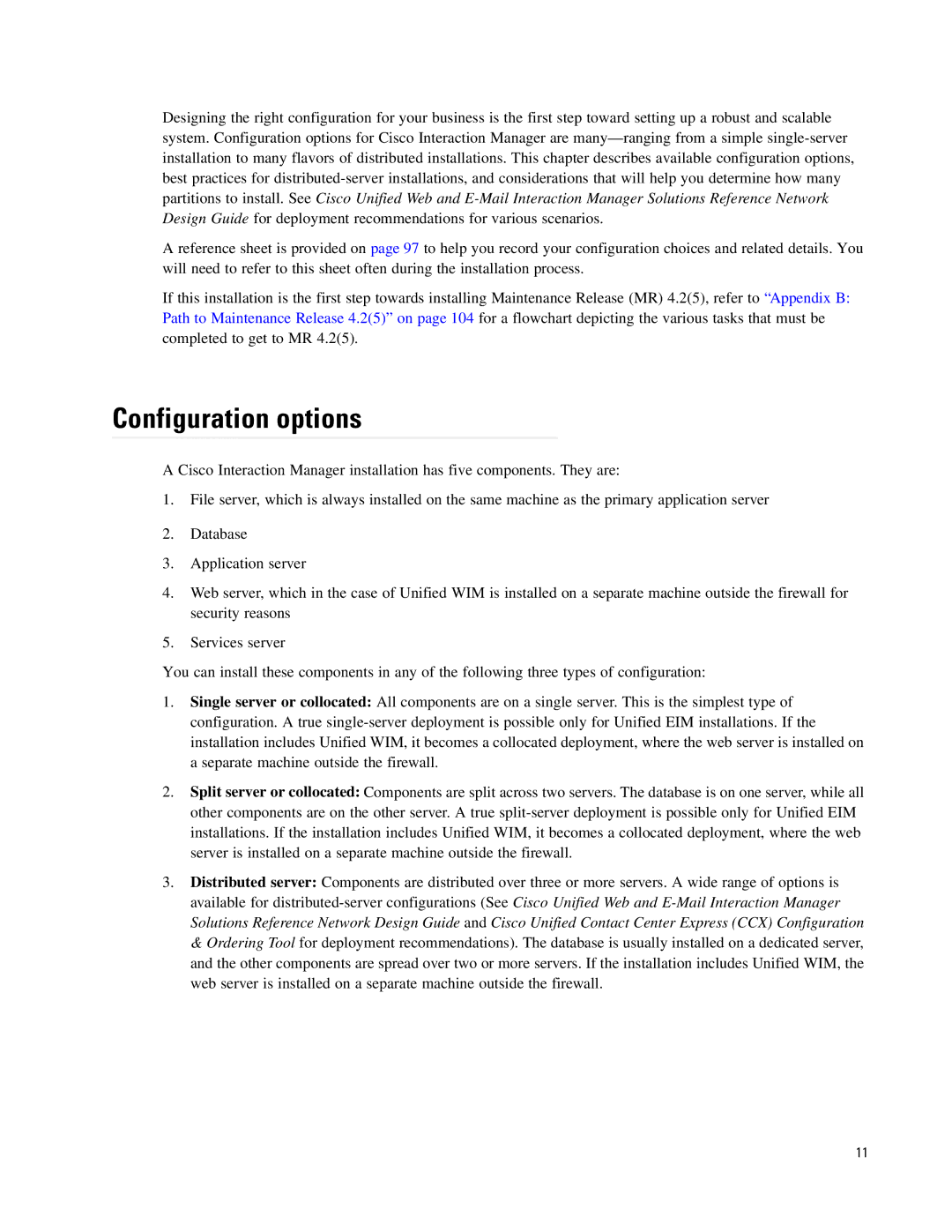Designing the right configuration for your business is the first step toward setting up a robust and scalable system. Configuration options for Cisco Interaction Manager are
A reference sheet is provided on page 97 to help you record your configuration choices and related details. You will need to refer to this sheet often during the installation process.
If this installation is the first step towards installing Maintenance Release (MR) 4.2(5), refer to “Appendix B: Path to Maintenance Release 4.2(5)” on page 104 for a flowchart depicting the various tasks that must be completed to get to MR 4.2(5).
Configuration options
A Cisco Interaction Manager installation has five components. They are:
1.File server, which is always installed on the same machine as the primary application server
2.Database
3.Application server
4.Web server, which in the case of Unified WIM is installed on a separate machine outside the firewall for security reasons
5.Services server
You can install these components in any of the following three types of configuration:
1.Single server or collocated: All components are on a single server. This is the simplest type of configuration. A true
2.Split server or collocated: Components are split across two servers. The database is on one server, while all other components are on the other server. A true
3.Distributed server: Components are distributed over three or more servers. A wide range of options is available for
11
